Imagine going out into your backyard and picking a basket full of colorful, tasty veggies. Growing your own food is one of the most satisfying things in the world, but the soil is what makes a veggie garden grow.
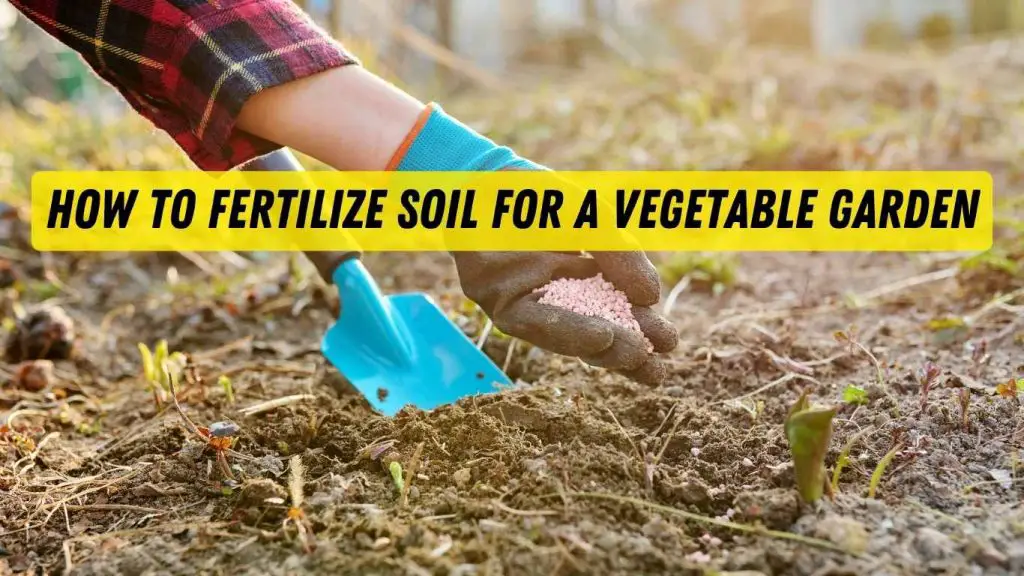
When you know how to fertilize your garden dirt correctly, you can bring out its full potential and grow a lot of healthy plants. We’ll talk about the most important ways to fertilize soil in this in-depth guide, which will help you turn your garden into a productive haven.
From learning about the nutrients and pH levels in the soil to picking the right fertilizer and using organic alternatives, we’ll teach you what you need to know to feed your soil and enjoy a healthy food garden.
That being said, let’s get started and learn how to fertilize soil so that you always have fresh, healthy veggies on hand.
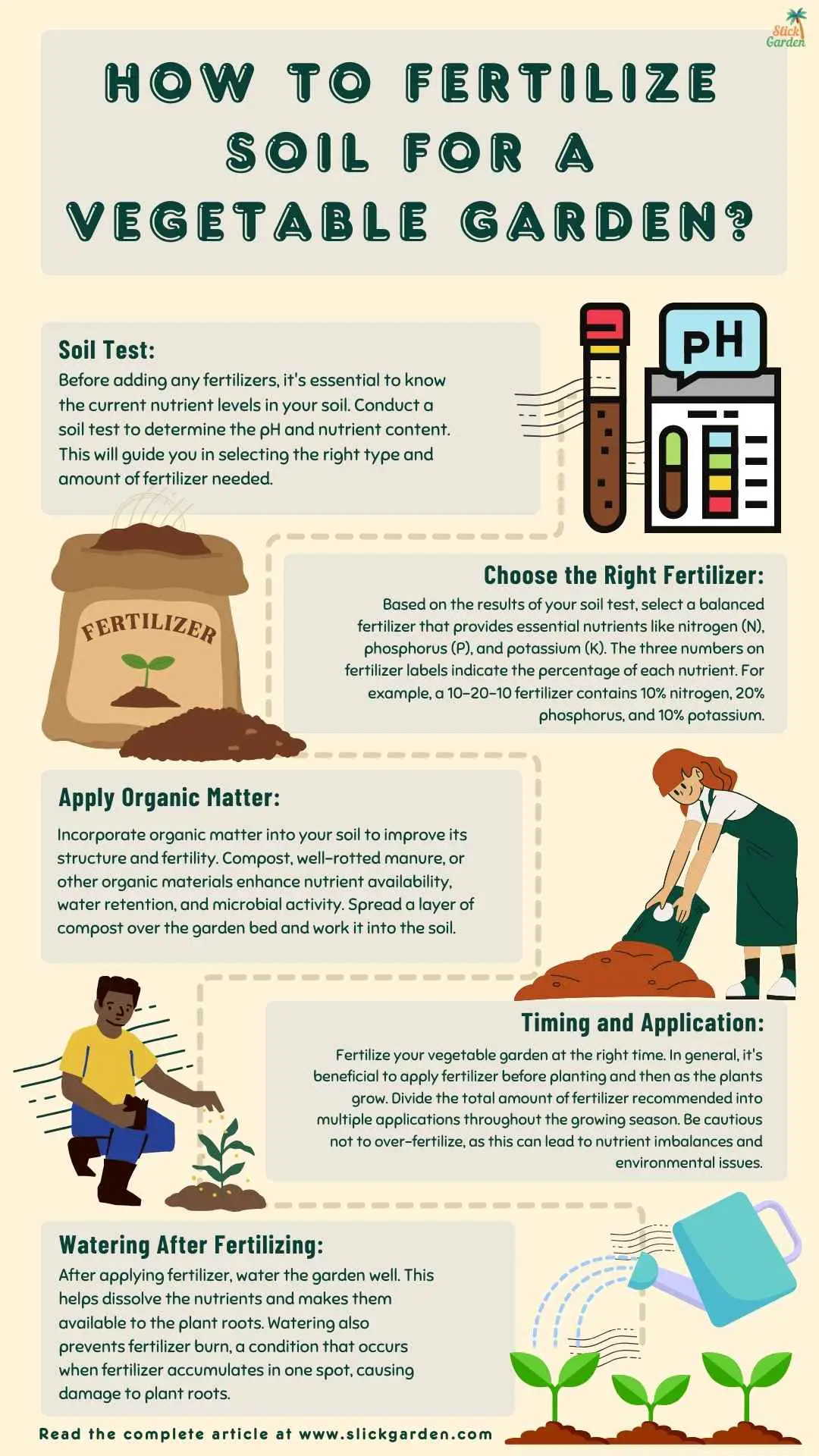
Understanding Soil Nutrients and pH Levels
In order to plant a successful vegetable garden, it is essential to understand the pH levels and nutrients in the soil. Your plants’ productivity and well-being are greatly influenced by these variables.
You can choose the best fertilizer for your crop by having a basic understanding of pH levels and soil nutrients.
Plants require nutrients from the soil in order to grow and flourish. These consist of micronutrients like iron, zinc, and magnesium in addition to macronutrients like potassium, phosphorus, and nitrogen.
Stunted growth or low crop production might result from deficiencies in any one of the nutrients, as each one has a distinct function in the growth and development of plants.
The soil’s pH level indicates how acidic or alkaline it is and has a direct impact on the nutrients that plants may access. The pH range of 6 to 7, which is slightly acidic to neutral and where nutrients are most readily absorbed, is preferred by most vegetables.
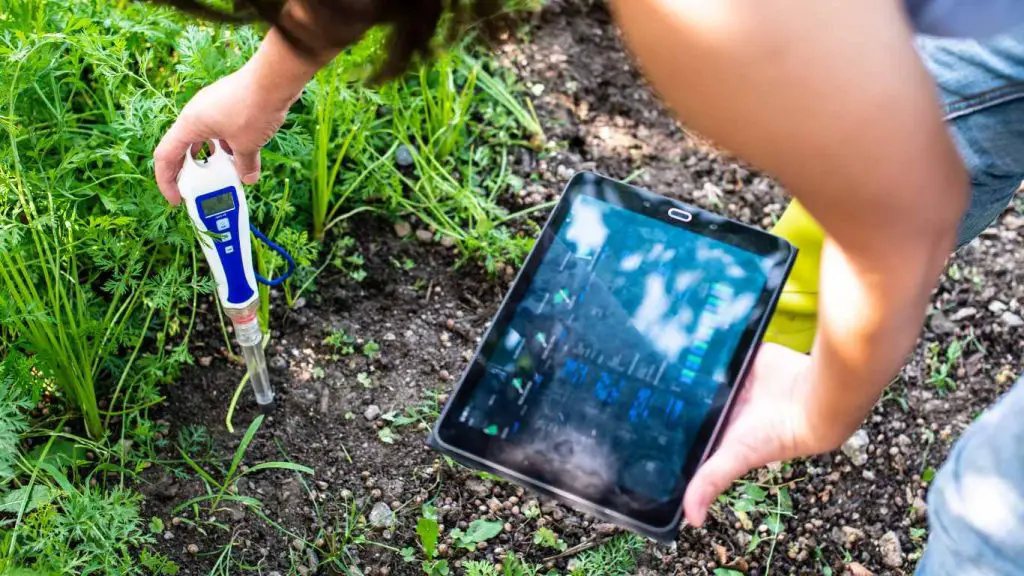
However, depending on your geography and type of soil, pH levels might vary greatly. Therefore, before adding any amendments, it is imperative to assess the pH level of your soil.
A pH testing kit, which can be purchased online or at garden retailers, makes it simple to determine the pH of your soil. Once you are aware of your soil’s pH, you can apply nutrients to change it.
For instance, you can add lime to your soil to raise its pH if it’s too acidic, and you can add sulfur or peat moss to lower its pH if it’s too alkaline. Plants can obtain the nutrients they need for healthy growth if the pH level is kept at the proper range.
Having a basic understanding of pH levels and soil nutrients will help you choose the best fertilizer for your vegetable garden. Different fertilizers are designed to change the pH of the soil or to address particular nutrient deficits.
For instance, a higher nitrogen fertilizer works best to encourage the growth of leaves, whereas a phosphorus-rich fertilizer helps with root development and flowering.
You can choose a fertilizer that will supply the essential nutrients and, if needed, modify the pH of your soil by evaluating the nutrient requirements of your soil and taking into account its pH level.
With this focused strategy, you can be sure that your plants obtain the proper ratio of nutrients, which will enable them to flourish and yield an abundance of food.
Related Articles:
- How To Amend Clay Soil For Vegetable Gardening?
- Everything You Need To Know About Preparing A Garden Bed For Planting Vegetables
Choosing the Right Fertilizer for Your Vegetable Garden
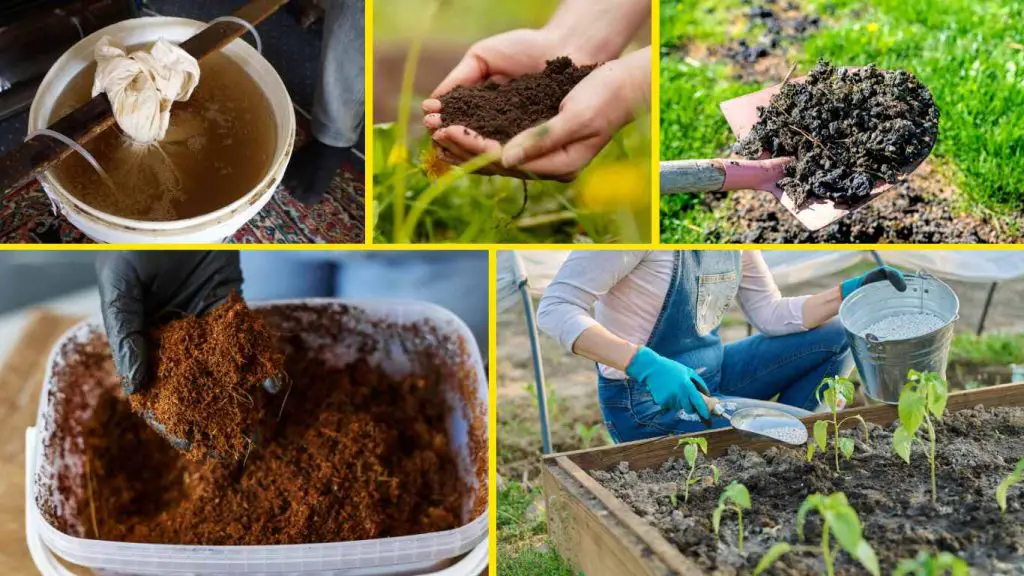
You can choose a fertilizer that will supply the essential nutrients and, if needed, modify the pH of your soil by evaluating the nutrient requirements of your soil and taking into account its pH level. With this focused strategy, you can be sure that your plants obtain the proper ratio of nutrients, which will enable them to flourish and yield an abundance of food.
Knowing what your soil needs is essential to selecting the best fertilizer for your vegetable plant. When choosing a fertilizer, it’s critical to identify any deficits or imbalances because different soils have differing pH and nutrient levels.
To determine the pH and nutritional content of the soil, first think about testing the soil. This will provide you with important information about the nutrients that are deficient in your soil and whether it is too acidic or alkaline. Agricultural extension offices and garden centers have easily accessible soil test kits.
You can determine the precise nutrients your soil needs once you obtain the results of your soil test. Often known as NPK, nitrogen, phosphorus, and potassium are common nutrients needed for a plant’s healthy growth. But your soil can also require extra micronutrients like iron, magnesium, and calcium.
Your main choices are between organic and inorganic fertilizers.
Inorganic feeds: Tomato feed and granular fertilizers sprinkled over the plants are examples of inorganic feeds, which are more synthetic. They are more concentrated fertilizers that provide plants with a faster dose of nutrients than organic feeds, but they still require regular application throughout the growth season.
Organic feeds: Organic feeds, such as compost, manure, and plant-based fertilizers, originate from natural plant sources or animal origins. Many of these slow-release feeds may be prepared at home, and they give the plants nutrients over an extended period. Five examples of organic fertilizers are as follows:
- Compost:
- When an organic matter like food scraps, yard waste, and manure breaks down, it turns into compost, a dark, crumbly substance that is full of nutrients. It makes the earth stronger, helps it hold onto water, and gives plants many nutrients they need to grow.
- Manure:
- A valuable organic fertilizer is animal manure, such as that from cows, horses, chickens, or sheep. It has a combination of potassium, phosphorus, and nitrogen, among other important nutrients. However, to prevent possible pathogen problems and to enable improved nutrient availability, manure must first be aged or composted.
- Bone Meal:
- Natural fertilizer known as “bone meal” is created by finely grinding bones, typically those of cattle. It is a good source of calcium and phosphorus, which are necessary for the growth of roots, flowering, and the general health of plants. For flowering plants, bulbs, and fruiting vegetables, bone meal is frequently used.
- Fish Emulsion:
- Fish emulsion is a liquid organic fertilizer derived from fish byproducts, including bones and offal. It contains a variety of essential nutrients, including nitrogen, phosphorus, and trace minerals. Fish emulsion is an effective fertilizer that helps plants grow lush, green leaves.
- Seaweed Fertilizer:
- Fertilizers made from marine algae are derived from seaweed or kelp. These nutrients include potassium, trace minerals, and growth-promoting hormones, which are all beneficial for your health. Using seaweed fertilizer can provide several benefits for plants, including boosting their resilience, promoting root growth, and enhancing their overall health. It is commonly utilized in both liquid and granular forms.
Related Articles:
- 15 Simple And Inexpensive Homemade Fertilizers
- How To Make Liquid Fertilizer From Compost For Vegetables?
- 10 Magical And Organic Fertilizers For Your Vegetable Garden
Proper Application Techniques for Optimal Results
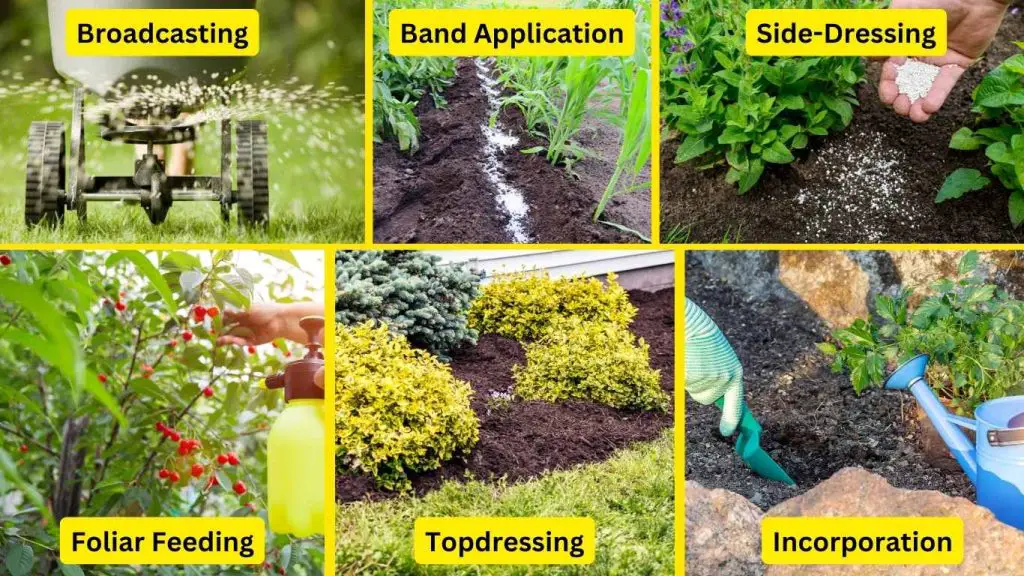
You can choose a fertilizer with confidence that will nourish your plants and help them reach their full potential now that you have a better understanding of the types of fertilizers available, the nutrient requirements of your soil, and the particular needs of your vegetable garden.
When fertilizing your vegetable garden, proper application methods are crucial to getting the best possible results. By using these methods, you can make sure that the fertilizer you’ve selected is applied efficiently and gives your plants the nutrients they require to flourish.
First and foremost, it’s crucial to carefully read and adhere to the instructions on the fertilizer packaging. You can prevent overfertilizing or underfertilizing your soil by taking the time to learn about the various recommended application rates and techniques for each fertilizer.
Use a garden fork or tiller to loosen the soil in preparation for applying the fertilizer. This facilitates deeper nutrient penetration into the soil and enhances soil aeration.
In order to guarantee that the fertilizer is applied directly to the intended plants, remove any weeds and debris from the area. The following are 6 techniques for fertilizer application in vegetable gardens:
1. Broadcasting:
Spreading fertilizer evenly over the whole garden area is what broadcasting means. You can use a broadcast spreader or do this by hand. Once the fertilizer is spread out, it is usually worked into the soil by lightly raking it or watering it. Broadcasting is an easy method that works well for large garden areas.
2. Band Application:
With this method, fertilizer is applied in concentrated bands or rows around the base of each plant or along the planting row. This enables precise delivery of nutrients to the root zone.
Band application is a great option for crops that have specific nutrient requirements or for precise fertilization in smaller gardens.
3. Side-Dressing:
Applying fertilizer in a band alongside the plants during the growing season is known as side-dressing. This method is particularly beneficial for enhancing the nutritional support for plants during their growth.
One way to perform side-dressing is by making shallow trenches or furrows alongside the plants and applying fertilizer to these furrows.
4. Foliar Feeding:
Foliar feeding is a method that entails applying a liquid fertilizer solution directly onto the leaves of the plants. This technique enables quick absorption of nutrients through the leaves.
Foliar feeding can be quite advantageous in situations where there is a need for rapid correction of nutrient deficiencies or when the uptake of nutrients through the roots is restricted. Opt for a properly mixed and harmonious fertilizer solution for foliar application.
5. Topdressing:
Distribute the compost or manure evenly on top of the soil without mixing it in. This method works well for mature plants.
6. Incorporation:
Incorporate the compost or manure into the upper layer of soil, about 4-6 inches deep, using a shovel or garden fork. This is better suited for creating a new bed or when the soil requires enhancement
Ensuring Long-Term Soil Health
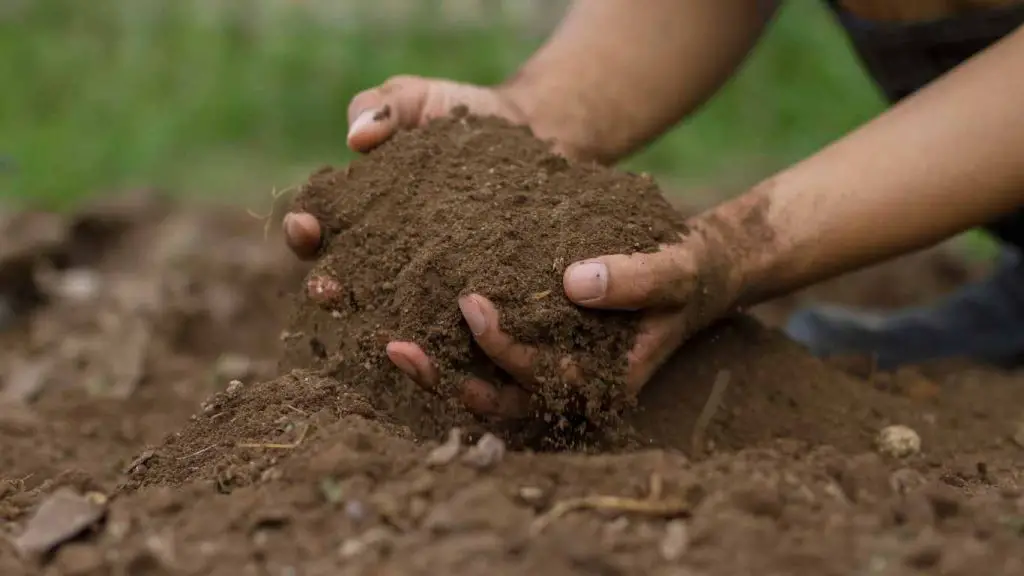
In order to maintain soil fertility, it is crucial to conduct regular soil testing, visually inspect the soil, incorporate organic matter, and follow a fertilization schedule. However, it is equally important to prioritize the long-term health of your soil.
By incorporating specific techniques, you can establish an eco-friendly setting that promotes the overall health of your vegetable garden.
Implementing crop rotation is essential for maintaining the long-term health of the soil. Rotating crops involves planting various vegetable families in different sections of your garden annually.
This method is effective in preventing the accumulation of nutrient deficiencies and minimizing the chances of diseases or pests that may harm certain crops.
By regularly rotating your vegetables, you can ensure that your soil remains nutrient-rich and avoid the loss of vital elements.
Another important practice to keep in mind is cover cropping. Some crops, like legumes or grasses, are grown with the primary purpose of improving soil health, rather than being harvested for consumption.
These crops have multiple benefits, including preventing erosion, enhancing soil structure, suppressing weeds, and increasing organic matter content.
By tilling cover crops into the soil, valuable nutrients and organic material are added, which improves the overall fertility and health of the soil.
Proper soil management techniques are crucial, along with crop rotation and cover cropping. It is important to avoid excessive tilling or compacting of the soil, as these actions can disturb its structure and drainage, which can have a detrimental effect on plant growth.
Furthermore, it’s important to consider water management and make sure your garden is properly irrigated to avoid waterlogging or drought.
Regular weeding is important to ensure that your vegetables have access to the nutrients and water they need, without competition from weeds.
Finally, it’s important to regularly add organic materials to your soil. Adding compost, animal manure, and other natural sources of organic matter to the soil has multiple benefits.
It enriches the soil with essential nutrients, enhances its moisture retention capacity, and promotes beneficial microbial activity. By consistently adding organic matter to your soil, you are enhancing its fertility and overall well-being.
Ultimately, you have the ability to improve the productivity of your vegetable garden by implementing effective soil fertilization strategies. With a grasp of soil nutrients and pH levels, selecting the appropriate fertilizer, correctly applying it, exploring organic alternatives, and preserving soil fertility, you can create a flourishing garden that produces an abundance of fresh and nutrient-packed produce. Keep in mind that maintaining the health of the soil over the long term is crucial.
